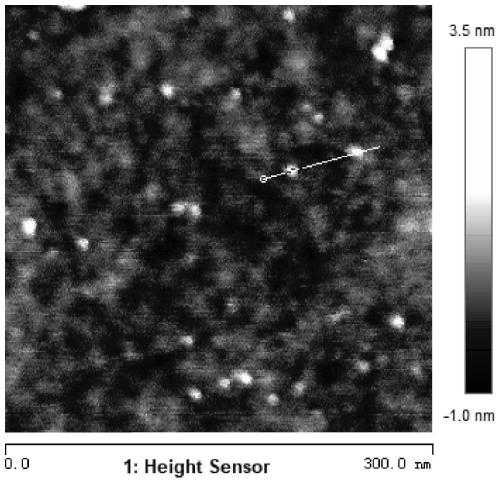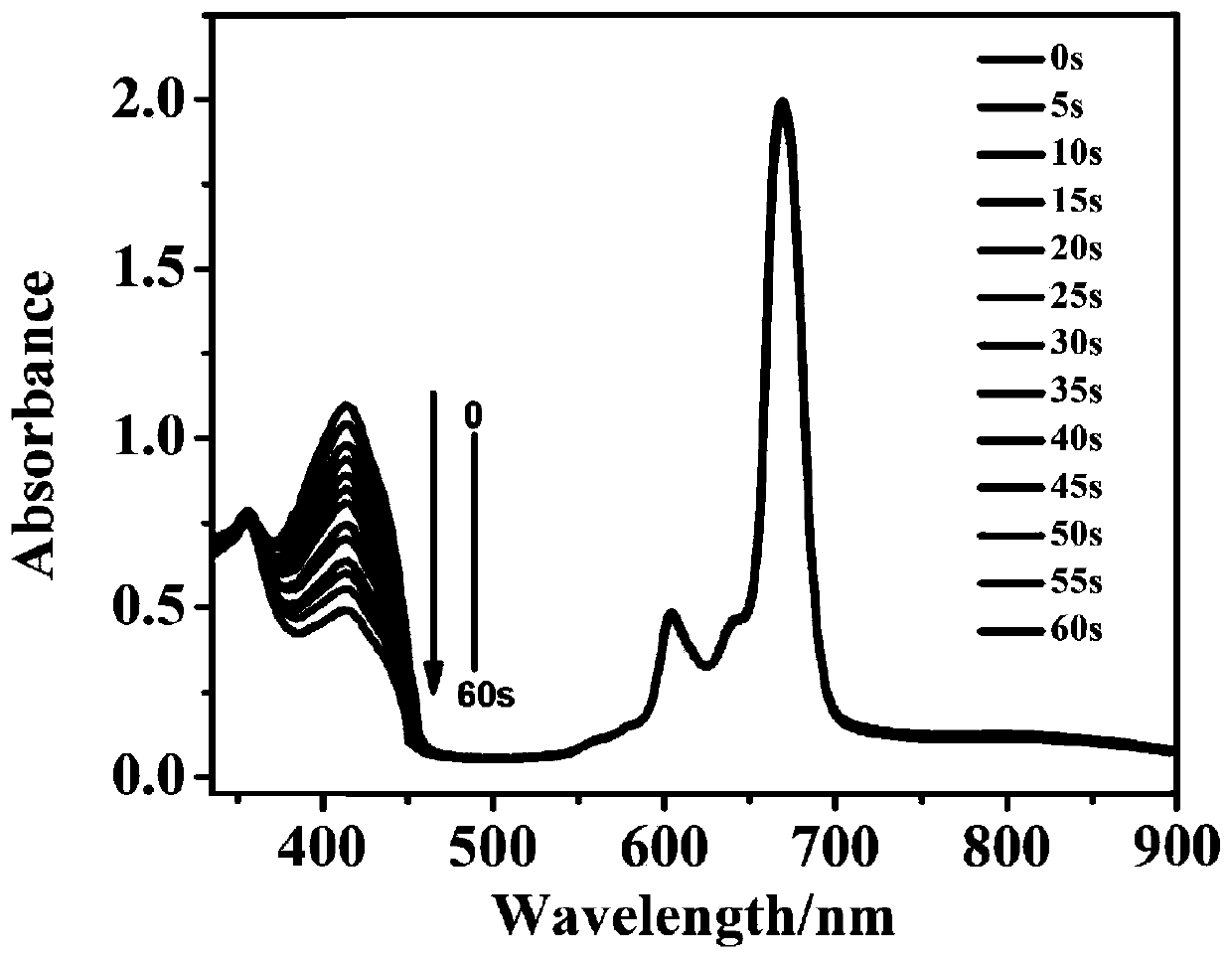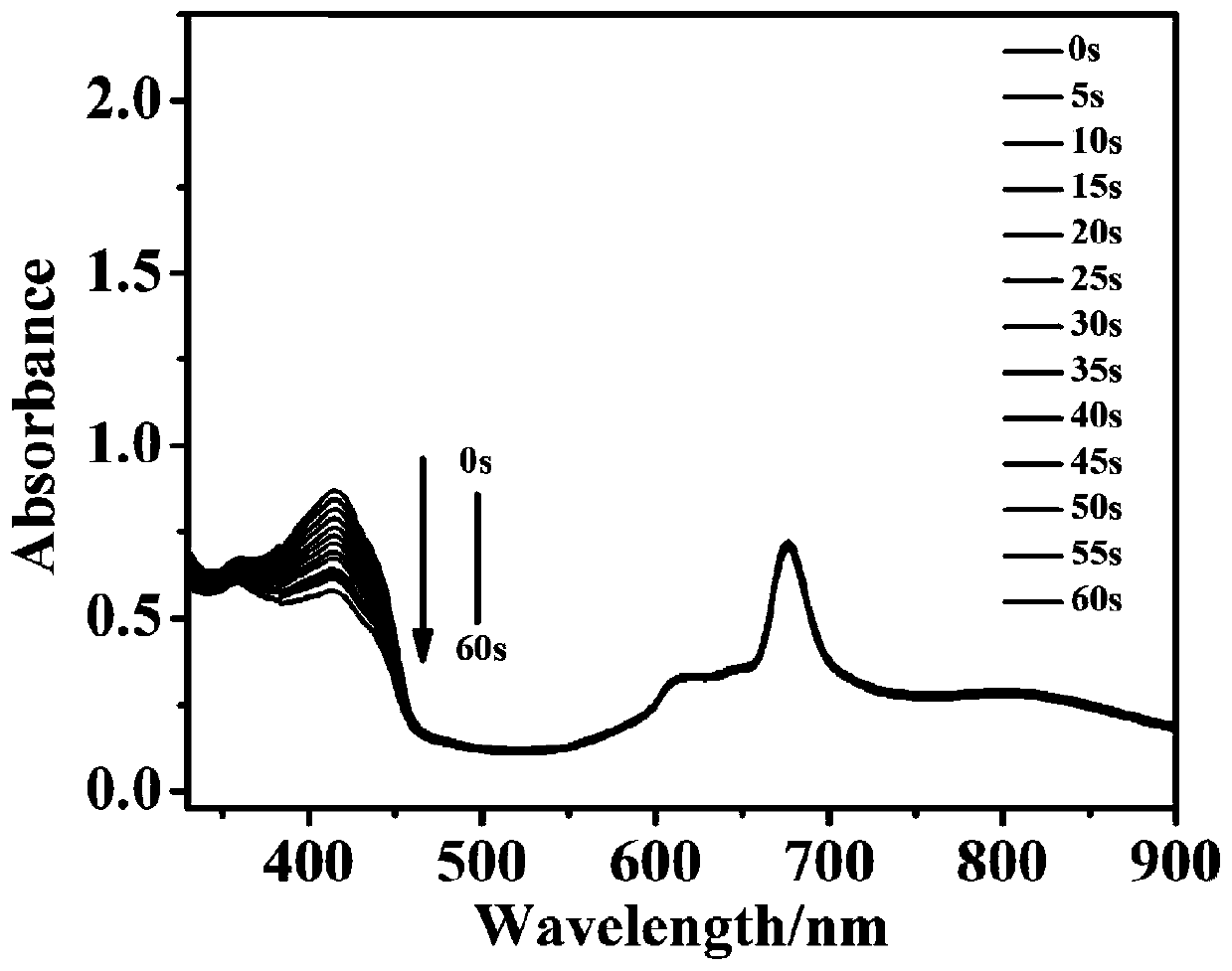Phthalocyanine-RGD polypeptide-graphene oxide composite nano material and preparation method and application thereof
A graphene composite and nanomaterial technology, which is applied in the fields of wave energy or particle radiation treatment materials, drug combinations, pharmaceutical formulations, etc., can solve problems such as no targeted silicon phthalocyanine drugs, etc., to improve the photothermal conversion. Efficiency, improved photothermal conversion efficiency, good photodynamic therapy and photothermal effects
- Summary
- Abstract
- Description
- Claims
- Application Information
AI Technical Summary
Problems solved by technology
Method used
Image
Examples
Embodiment 1
[0058] Embodiment 1: the preparation of amino silicon phthalocyanine (n=1)
[0059] Raw materials and reagents: Dichlorosilicon phthalocyanine, 2-(2-aminoethoxy)ethanol, potassium carbonate mass ratio is 1:6:6, the amount of pyridine is 9 ml / gram of dichlorosilicon phthalocyanine, toluene The dosage is 120 ml / gram of dichlorosilicon phthalocyanine.
[0060] In proportion, take dichlorosilicon phthalocyanine, 2-(2-aminoethoxy)ethanol, potassium carbonate (K 2 CO 3 ) and pyridine were dissolved in toluene, heated to 130°C, and refluxed for 18h under the protection of nitrogen. After the reaction solution was evaporated to remove the solvent in vacuo, the resulting solid was completely dissolved in chloroform, filtered, and washed three times with ultrapure water. After the filtrate was evaporated to dryness under reduced pressure, it was recrystallized four times with chloroform / n-hexane to obtain aminosilicone phthalocyanine (Formula I, n=1).
Embodiment 2
[0061] Embodiment 2: Taking n=1 in phthalocyanine as an example, the preparation method of phthalocyanine-RGD polypeptide-graphene oxide (RPG), the steps are as follows:
[0062] Add 10.3 g of graphene oxide (GO) into 20 L of distilled N,N-dimethylformamide, and sonicate for 3 h. Add 76.7g (0.4M) 1-(3-dimethylaminopropyl)-3-ethylcarbodiimide hydrochloride, 46g (0.4M), N-hydroxysuccinimide to the sonicated suspension Amine, 523mL (3M) N,N-diisopropylethylamine and 40.5g (0.5M) amino silicon phthalocyanine (n = 1), 18.6g polypeptide (0.25M), stirred at room temperature, reacted under nitrogen atmosphere 5 days. The product was dialyzed, and finally the solid product was dispersed in ultrapure water and freeze-dried to obtain a total of 21.3 g of product RPG, including 6.2 g of aminosilicone phthalocyanine, 10.3 g of graphene oxide, and 4.8 g of RGD polypeptide.
[0063] The average particle diameter of the obtained product RPG is 100-200 nm. The AFM photograph of gained amino...
Embodiment 3
[0066] Embodiment 3, taking amino silicon phthalocyanine n=2 as an example
[0067] As described in Example 2, the difference is that the amino silicon phthalocyanine (n=1) in step (2) is replaced by an equimolar amount of n=2 amino silicon phthalocyanine, and the resulting product amino silicon phthalocyanine Cyanine-RGD polypeptide-graphene oxide composite nanomaterials tested by singlet oxygen in N,N-dimethylformamide and H 2 The yields of singlet oxygen in O are higher. And it has a very good thermotherapy effect, and it rises to about 50°C within 5 minutes.
PUM
| Property | Measurement | Unit |
|---|---|---|
| particle size | aaaaa | aaaaa |
| particle size | aaaaa | aaaaa |
Abstract
Description
Claims
Application Information
 Login to View More
Login to View More - R&D
- Intellectual Property
- Life Sciences
- Materials
- Tech Scout
- Unparalleled Data Quality
- Higher Quality Content
- 60% Fewer Hallucinations
Browse by: Latest US Patents, China's latest patents, Technical Efficacy Thesaurus, Application Domain, Technology Topic, Popular Technical Reports.
© 2025 PatSnap. All rights reserved.Legal|Privacy policy|Modern Slavery Act Transparency Statement|Sitemap|About US| Contact US: help@patsnap.com



